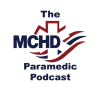The COVID-19 pandemic has forced EMS and all emergency providers to reassess our approach to airway management and treatment. This is especially true when we must care for patients with cough, fever and difficulty breathing prior to knowing their infectious status.
Coronaviruses are transmitted via patient droplets. However, prehospital providers can increase the risk of viral transmission by aerosolizing patient droplets. This is thought to occur in several situations, such as suctioning, intubation, utilizing a BVM, during non-invasive positive pressure ventilation, with high-flow oxygen use (>6L/min), or when administering nebulized medications.
At Montgomery County Hospital District EMS in Greater Houston, a low-cost approach is being used to create a spacer which will allow patients to receive albuterol via metered-dose inhaler (MDI) as opposed to in the usual nebulized form.
Even if your service cannot rapidly source or afford MDI albuterol, another option would be to allow medics to give the patient their own albuterol during transport, if they have a prescription MDI available.
This approach will decrease viral spread without compromising patient care. In fact, in one large prospective ED study, MDI albuterol demonstrated decreased length of stay, increased oxygen saturation and decreased ED return visits when compared to nebulized albuterol [1].
How to administer MDI albuterol with a spacer
Take a look at the following video that demonstrates a simple and safe method to administer MDI albuterol with a spacer allowing for maximal beta-agonist effect.
COVID-19 update
Listen below for COVID-19 updates from an infectious disease, epidemiology standpoint.
https://soundcloud.com/mchdpp/covid-final-mixdown
References
- Newman KB, et al. A comparison of albuterol administered by MDI and spacer with albuterol by nebulizer in adults presenting to an urban ED with acute asthma. Chest. April 2002;121:1036–41.
Read next: King County (Wash.) shares EMS resources for COVID-19













